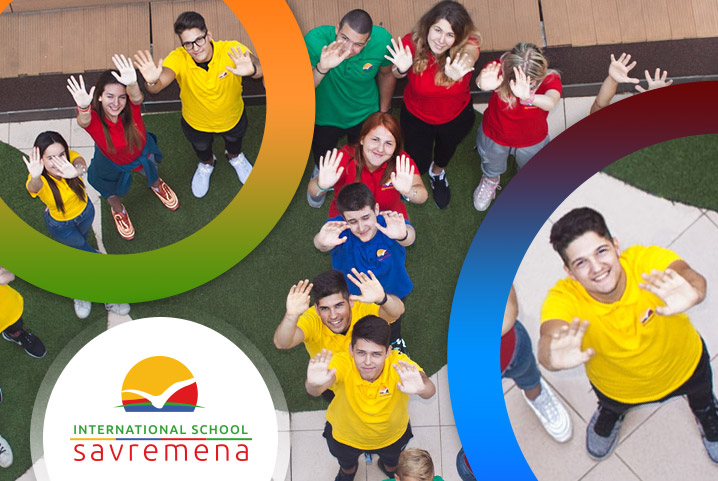
Students of International School Savremena celebrated Peace Day on 21 September, contributing to the efforts towards world peace. This way, they reflected the desires and hopes of young people around the world.
Serbia, represented by Savremena’s students, took part in Peace Day together with all 193 UN member states.

Celebrating Peace Day
International School Savremena joined other international schools in celebrating Peace Day. The Global Perspectives teacher and the Economics teacher partnered up to design interdisciplinary lessons on this topic.
The students were asked to stand up and stay still for one minute of silence in order to be reminded of the importance of this day. The Global Perspectives teacher took a picture of the students forming a peace sign. They were all wearing school uniforms so the picture looks colourful and jolly. They also recorded a one-minute video with brief information about the school. The photo that they took will be posted across Peace One Day social media channels in the coming days and weeks. It was used to build a vibrant compilation of photos from each country that was a central installation at the flagship Peace Day celebration in London.
During Economics lessons, the students watched a video on the surviving victims of nuclear bombing. The idea was to discuss the benefits of peace for the economy and how it could be achieved. They also discussed whether it was possible to live in a world without war.
The conclusion was that it is very hard to reach world peace. They agreed that there is a difference between what is peace and how it should be achieved. But in the end, they concluded that they should first start to promote and live peace at the individual level in order to expect changes globally.
About Peace One Day
In 1999, filmmaker Jeremy Gilley set out to document his efforts to create an annual Peace Day. To this end, he founded the non-profit organisation Peace One Day. In 2001 the organisation’s efforts were rewarded when the member states of the United Nations unanimously adopted the first ever annual day of global ceasefire and non-violence on 21 September – Peace Day.
Peace Day has been a self-sustaining, annual day of global unity and intercultural cooperation ever since. Through initiatives and collaborations, Peace One Day continues to encourage organisations and individuals to reduce violence at home, in the workplace, at school, in our communities and towards our environment.
Since International School Savremena promotes unity and equality, harmony and compassion, and above all the culture of peace, it came natural to us to take part in this global movement. By celebrating Peace Day, Savremena’s students received the message of peace which will help them in making a more peaceful world a reality.

















